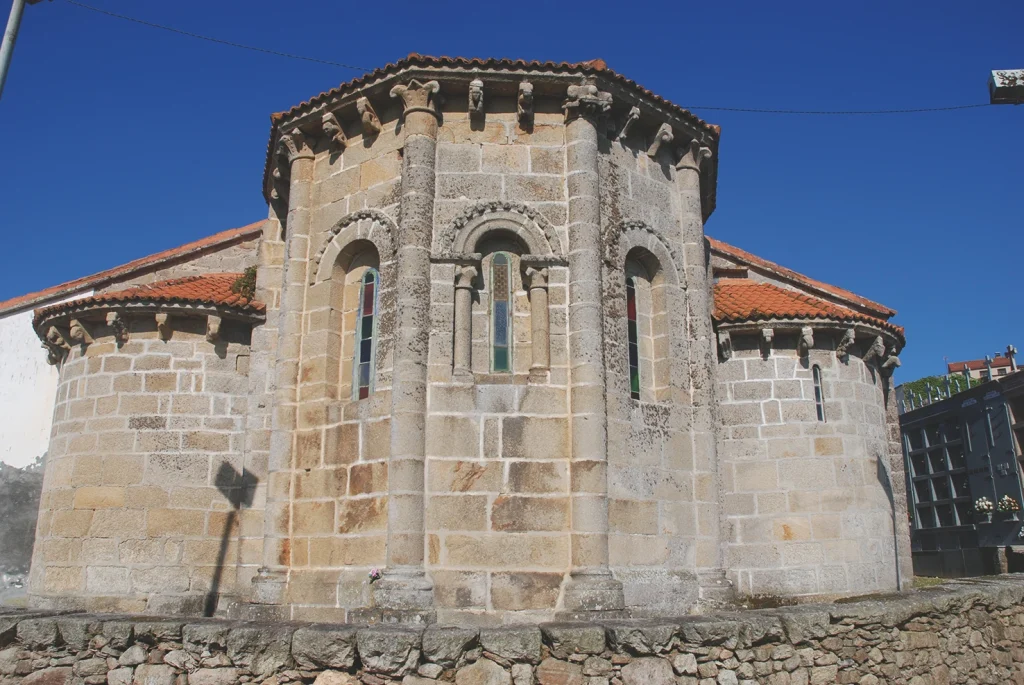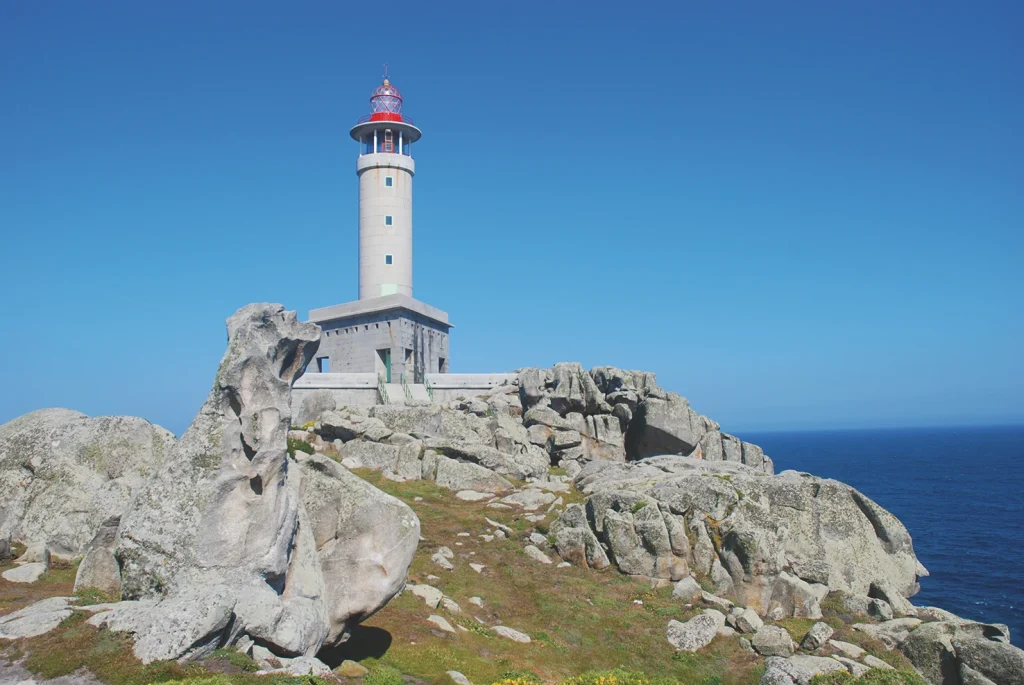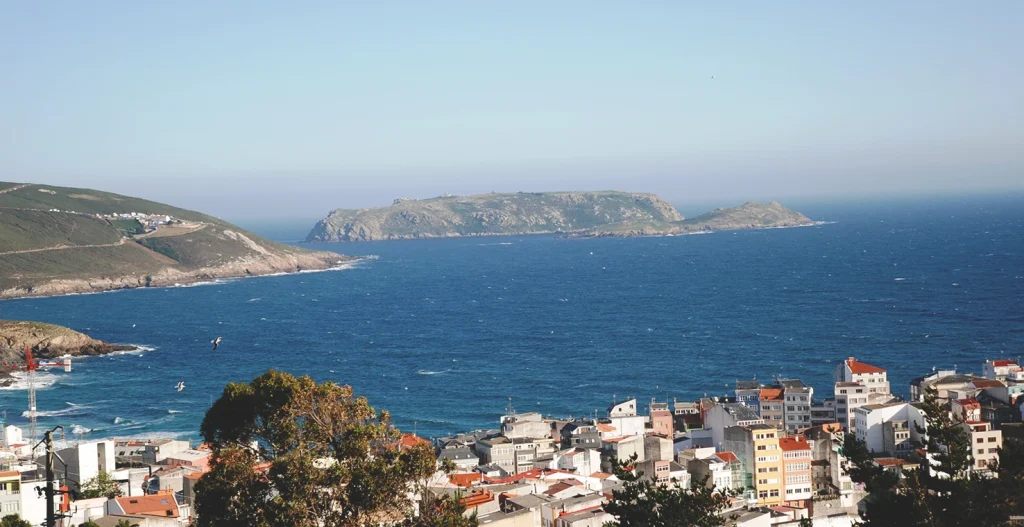From O Roncudo, head back to Corme and leave the town on the same road as the one you used to get there. Four kilometres further on, turn left onto the CP 68 01 road to Brantuas and Niñóns. After about a kilometre you’ll see a track to the left that goes up to Monte Faro in Brantuas (229 m), where you’ll see the chapel of the Virxe do Faro (Virgin of the Lighthouse), which holds a pilgrimage every 8 September. Nearby is a tower dedicated to the Most Sacred Heart of Jesus that is 39 m high. It was commissioned by an emigrant of the parish and inaugurated in 1959. If you climb up its 133 steps, you’ll get some unbeatable views of the area.

After Niñóns, you’ll come to the crossroads of A Campara and there turn left towards Cores and Mens. The church at Cores still conserves some parts of its original Romanesque fabric, while remains of the nearby Roman villa such as altars, sepulchres and roof tiles can also be seen.
The parish of Mens has two important medieval monuments: the church of Santiago de Mens and Torres dos Altamira.
The parish church of Santiago is a beautiful Romanesque building that formed part of a Benedictine monastery, of which records dating back to the 10th c. exist. What remains of the the complex is the church itself. The most interesting part of the church are the three apses with their carved corbels.
The towers were commissioned by Lope Sánchez de Moscoso, on the site of a previous fortress destroyed by the Irmandiño rebels. Its location on top of an ancient hillfort enabled it to control the surrounding plain. The last owners, the Abelenda family, later built a residence inside the castle. It was in ruins for many years until a member of the family bought the property and rehabilitated it throughout, and then converted it into a private residence.
From Mens it’s worth going to Punta Nariga, a headland between cape Santo Adrián e the Sisargas islands and Punta do Roncudo. A category one lighthouse was built on this promontory in 1994, designed by an architect from Pontevedra, César Portela, who chose a solid design that would last and blend as much as possible into the surrounding stone landscape. The building is divided into three base parts: the base, the service building and the tower with the lantern room. The entire complex is built in granite with different finishes. The higher the tower, the greater the degree of elaboration of the stonework.
The first part consists of a triangular platform made of large granite blocks taken from the surrounding area. One of the angles looks like the bow of a ship, where a figurehead has been attached. The second part is similar to a prism, likewise with a triangular base, used to house the services necessary for the lighthouse to function. The flat roof also functions as a viewing point. Finally, there is the cylindrical tower with the lantern room on top. This is one of the best lighthouses to be built in the second half of the twentieth century in the Iberian Peninsula, in a landscape of tremendous natural value.

Now continue on to Malpica. A kilometre after Beo there is a track on the left that goes to the cape of Santo Adrián, which ends at the chapel dedicated to the saint, where a very popular pilgrimage is held on the weekend following 16 June. Hundreds of pilgrims accompany the image in a procession from the parish church of Malpica to this chapel, and then hold liturgical celebrations in honour of the saint and the pilgrimage.

The cape of Santo Adrián has come excellent views over the town of Malpica and the Sisargas Islands, which are an archipelago made up of three small islets: Sisarga Grande, Sisarga Chica and Malante. The lighthouse is on the first of these, one of the first to be built on this coast, along with the ones at Vilán and Fisterra. It entered service in 1853. The building is on a rectangular ground plan with a central patio. The tower rises from the side facing the sea, with a shaft shaped like a truncated pyramid and an octagonal section. It was designed by the engineer Celedonio de Uribe.
Go back to the main road from the cape of Santo Adrián to Malpica to see the town.